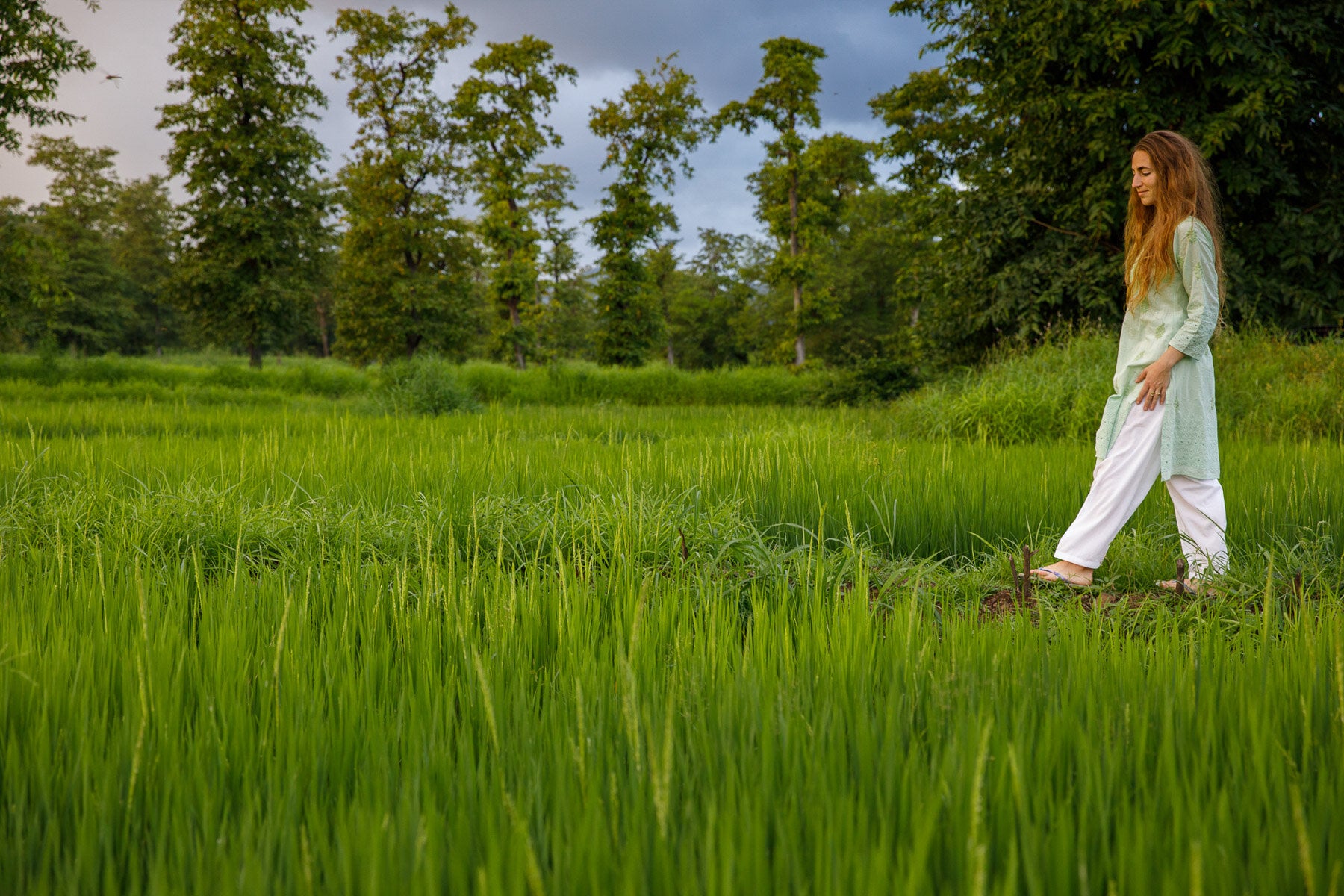
Brahmacharya is the practice of energy management.
It involves getting to know your body and your mind - knowing when to put your foot on the gas and when to ease off. And sometimes it’s about letting yourself park the car and go for a stroll down a country lane.
The practice of brahmacharya is a consideration of cause and effect, an action and the results. Most of us have been conditioned to believe that expending maximum effort is always required to yield desired results. We’re told that we need to work hard to get somewhere. But this approach to life is ultimately depleting. It leads us to take on too much. It leads us to believe that we are the ones exclusively in charge of the outcome - of all outcomes.
I see clients and students taking an extreme action-oriented approach to healing - one that’s focused on changing the outside before the inside. Folks are putting in a lot of effort to make themselves feel better. They’ll try all kinds of remedies and approaches, often overdoing it, and rarely sticking with one thing long enough to give it an opportunity to work.
There is a difference between seeking healing and allowing well-being. The first approach says, ‘there is something wrong with me that needs to be fixed’. The second point of view says, ‘I’m fundamentally okay, I just need to chill out and let myself be okay’. The body naturally wants to come back to a balanced state when you get out of the way and let it.
Rest is delicious
So a big part of brahmacharya is ensuring there is adequate rest and joy in life. Rest isnʻt just sleep. It’s anytime the mind is resting while you are awake. You can think about managing your energy like managing your bank account. You don’t want to constantly live in overdraft, right? It’s important to let your money accumulate at times. And it’s the same with your energetic reserves. There is tremendous value in resting and itʻs necessary to keep balance in life. Doing less means time to renew and build strength that allows creativity to come forth.
Rest builds ojas
Taking rest is also a key factor in building ojas. From the texts of Ayurveda we understand that ojas is the final product of the digestion of food, air, water and life experience. It's a golden essence that builds as the nutrients we ingest are gradually assimilated into the body’s tissues.
Ojas is our essential vitality. It’s what gives us our zest for life. It’s responsible for our immunity and reproductive function and it gives luster to our skin, eyes and hair.
The amount of ojas we have affects how we are able to use the energy available to us.
Abundant ojas gives feelings of bliss, peacefulness and enthusiasm
In these emotional states we are better able to make decisions and direct our energy towards activities that make us feel good. But when ojas is depleted we find ourselves in a state of fatigue and resistance. This is when we push ourselves to get somewhere and do something in order to feel better.
We deplete ojas when we extend our body and mind beyond its ideal range of function. Patterns and habits that drain ojas include:
•Not getting enough sleep
•Taking part in too many stimulating activities
•Living in a state of stress over an extended period of time
•Eating too little or too much (including too much of one kind of taste)
•Not chewing food thoroughly
•Too much sexual activity
In other words low ojas is related to poor energy management. It’s a failure to integrate adequate rest into daily life. The importance of rest as a daily remedy for building vitality and immunity can’t be overstated. And rest can take many forms.
5 ways to enjoy daily rest
1. Take time to be quiet throughout the day.
Talking uses energy even more than walking. Have some meals in silence and see how you feel afterwards.
2. Occasionally sit still and notice your breathing.
Then bring regularity to the breath: smooth and even inhales and long, slow exhales. This will slow down the mind.
3. Let go of rushing through the day.
There isnʻt anywhere to get to. Life is right now in front of you so stay present and stick with things to completion. When the mind moves to the next thing before finishing the task at hand, energy is dispersed and depleted and vata dosha is aggravated. A regular pranayama and meditation practice will support making this shift in how you approach life.
4. Arrange your schedule so that you get adequate sleep.
Sleep allows your body to fully rejuvenate and heal in a way that it cannot do during the waking hours. Aim for seven to nine hours per night, depending on your constitution. If you’re having trouble sleeping, check out these Ayurvedic tips for a good night’s rest.
5. Notice where you are in resistance to life.
Being in a state of resistance burns up large amounts of energy. That resistance might be from desiring something and thinking you canʻt have it or pushing something away.
Here's an example of being in resistance to something you are wanting: Say you want a new house for your family but you think it canʻt happen because you donʻt have enough money. As long as you only point your energy toward not having enough money, you wonʻt move into that dream house.
I love the saying “I have to want what I have to have what I want”. Being in acceptance and appreciation of what you have is a starting point. Then just being open to the possibility that things can change allows energy to flow.
Three times each day take just one minute to imagine how that new house (or whatever it is that you are wanting) will feel and smile to yourself. Then let go and continue about your day. If the “I donʻt have enough money” thought comes up just refocus your attention to something you do have right now, smile to yourself and move on.
In this way you shift your energy on a subject, and you allow for more possibilities in life to unfold naturally an easily.
Remember, rest is easy
Rest is enjoyable. And it will play a big role in bringing about the peace and enjoyment that you seek in life.
